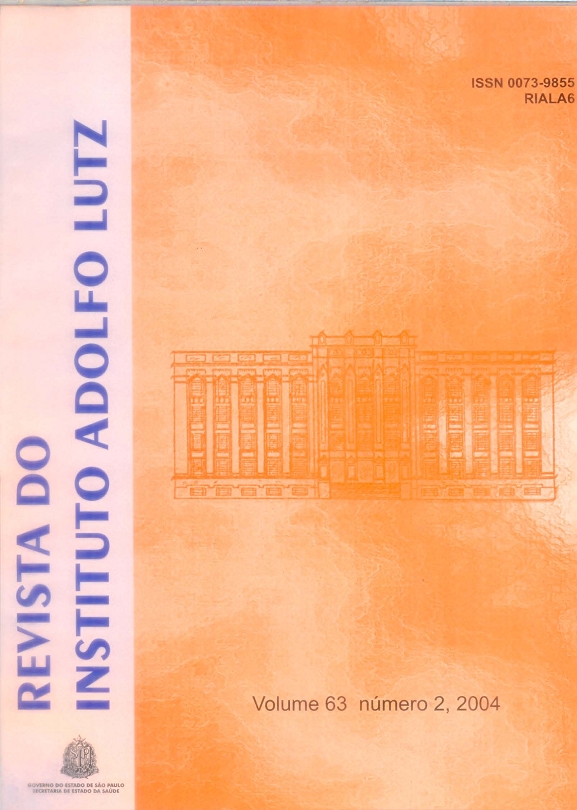Abstract
Several Curcuma species have been studied since the sixties due to its widespread cultivation in the
whole Southeast area, and for its use as popular medicine. Nowadays, Curcuma has also been largely
employed in Brazil. Although diverse analytical techniques have been used for Curcuma extracts
characterization, its quality control still defies the public health laboratory. The present work proposes a
rapid and low cost method using thin-layer chromatography in order to differentiate Curcuma zedoaria
from diverse origin.
References
1. Cao, H et al. Molecular analysis of medicinally-used Chinese and Japanese Curcuma based on 18S rRNA gene and trnK gene sequences. Biol. Pharm. Bull., 1: 1389-94, 2001.
2. Coimbra, R. Notas de Fitoterapia.2a ed., Edição do Laboratório Clínico Silva Araújo S.A., Rio de Janeiro, 1958.
3. Galand, N. et al. OPLC and AMD, recent techniques of planar chromatography: their interest for separation and characterization of extractive and synthetic compounds. Fitoterapia, 73: 121-34, 2002.
4. Gupta, S. K.et al. Isolation of Ethyl p-Methoxycinnamate, the major antifungal priciple of Curcuma zedoaria. Lloydia,39(4):218-22, 1976.
5. Hiermann, A ; Radl, B. Analysis of aromatic plant acids by capillary zone electrophoresis. J. Chromatog. A, 803: 311-4, 1998.
6. Hikino, H. et al. Structure of Curcumol. Chem. Pharm. Bull., 14 (11): 1241-49, 1966.
7. Hikino, H. et al. Structure of Curdione. Chem. Pharm. Bull., 15 (9): 1390-94, 1967.
8. Hikino, H. et al. Structure of Curcumenol. Chem. Pharm. Bull., 16: 39- 42, 1968.
9. Hikino, H. et al. Structure of Dehydrocurdione, a Serquiterpenoid of Curcuma zedoaria. Chem. Pharm. Bull., 20 (5): 987-9, 1972.
10. Hikino, H. et al. Structure of Zederone. Chem. Pharm. Bull., 16 (6): 1081-7, 1968.
11. Hikino, H. et al. Structure of Procurcumenol. Chem. Pharm. Bull., 16 (8): 1605-7, 1968.
12. Hikino, H. et al. Structure of Curcumol. Chem. Pharm. Bull., 16 (5): 827-31, 1968.
13. Hikino, H. et al. Furanodiene, a precursor of furan-containing sesquiterpenoids. Tetrahedron, 8: 931-3, 1968.
14. Hikino, H. et al. Structure of Curzerenone, Epicurzerenone and isofuranogermacrene. Tetrahedron, 24: 2855-8, 1968.
15. Hikino, H. et al. Sesquiterpenoids. Part XXXVII. Absolute Configuration and Conformation of Zederone, a Sesquiterpenoid of Curcuma zedoaria. J. Chem. Soc. (C): 688-91, 1971.
16. Kato, E.T.M..; Fisher, D.C.H. Estudo morfo-histológico e cromatográfico em camada delgada comparativo de raízes e de rizomas de Curcuma zedoaria (Bergius) Roscoe- droga, óleo essencial e extrato fluido. LECTA- USF, 14 (2): 9-26, jul./dez.1996.
17. Kim, K.I. et al. Antitumor, genotoxicity and anticlastrogenic activities of polysaccharide from Curcuma zedoaria. Mol. Cells. 31(4): 392-8, 2000.
18. Kim, K.I. et al. Effects of polyssaccharides from rhizomes of Curcuma zedoaria on macrophage functions. Biosci. Biotechnol. Biochem., 65(11): 2369-77, 2001.
19. Lee, H.; Lin, J.Y. Antimutagenic activity of extracts from anticancer drugs in Chinese medicine. Mutat. Res.,204(2):229-234, 1998.
20. Ma, H.Z. et al. Application of off-line supercritical-fluid extractiongas chromatography for the investigation of chemical-constituents in Curcuma zedoaria. Phytochem. Analysis, 6(6): 292-6, 1995.
21. Matsuda, H. et al. Inhibitory effect and action mechanism of sesquiterpenes from Zedoariae Rhizoma on D- galactosamine/lipopolysaccharide-induced liver injury. Bioorg. Med. Chem. Lett., 8(4):339-44, 1998.
22. Matsuda, H. et al. Hepatoprotective constituents from Zedoariae rhizoma: absolute stereostructures of three new carabrane-type sesquiterpenes, curcumenolactones A, B and C. Bioorg. Med. Chem., 9; 909-16, 2001.
23. Mello, M.O. et al. Quantificação da Micropropagação de Curcuma zedoaria Roscoe. Sci. Agric., 57(4): 703-7, 2000.
24. Miyake, E. T. Zedoária- Curcuma zedoaria Roscoe. Rev. Bras. Farmacogn., 1(2): 118-262, 1986.
25. Nadkarni, K.M. The Indian Materia Medica , Bombay, 1927.
26. Nyiredy, S. The bridge between TLC and HPLC: overpressured layer chromatography (OPLC). Trends Analyt. Chem., 20 (2): 91-101, 2001.
27. Poole, C.F., Dias, N. C. Practitioner’s guide to method development in thin-layer chromatography. J. Chromatog. A , 892: 123-42, 2000.
28. Poole, C.F. Planar chromatography at the turn of the century. J. Chromatog. A , 856:399-427, 1999.
29. Syu, W. J. et al. Cytotoxicity of curcuminoids and some novel compounds from Curcuma zedoaria. J. Nat. Prod., 61(12): 1531-4, 1998.
30. Takano, I. et al. Guaiane sesquiterpene lactones from Curcuma aeruginosa. Phytochemistry, 40(4): 1197- 2000, 1995.
31. Yoshioka, T. et al.. Antiinflamatory potency of dehydrocurdione, a zedoary-derived sesquiterpene. Inflamm. Res., 47(12):476-81, 1998.
32. Wagner, H.; Bladt, S. Plant drug analysis. Heidelberg, Springer-Verlag, 1996, 384 p.

This work is licensed under a Creative Commons Attribution 4.0 International License.
Copyright (c) 2004 Revista do Instituto Adolfo Lutz
